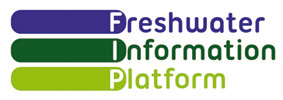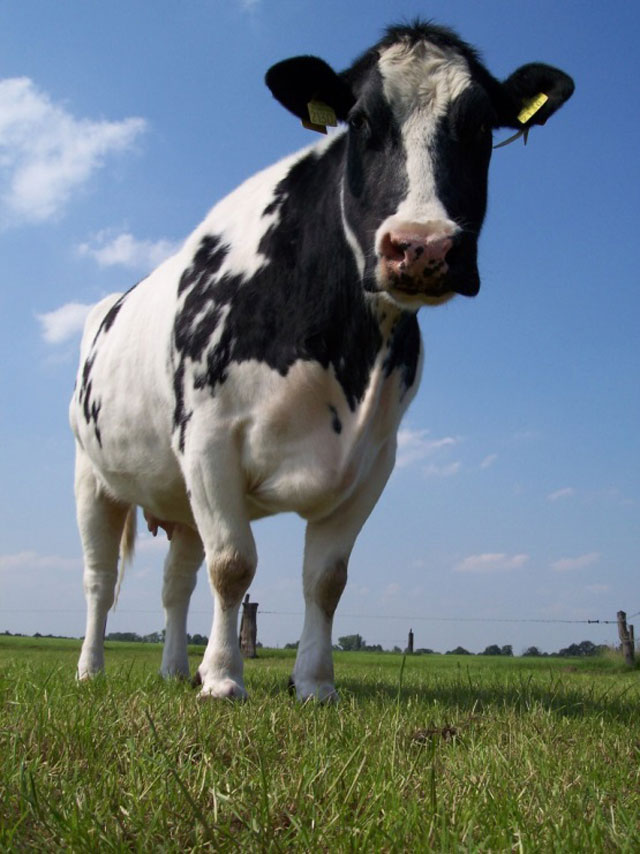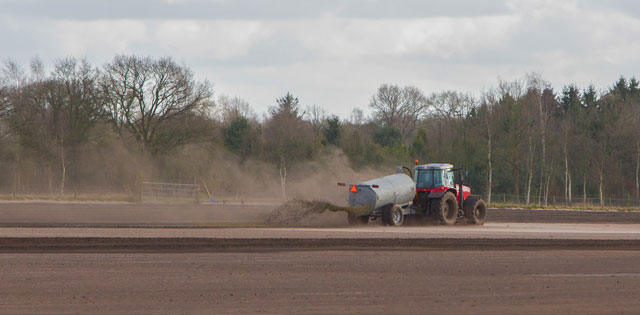Agriculture
Agriculture takes place on almost half of the EU’s land area, and is a key element of Europe’s economy. As such, farming practices exert a major influence on European landscapes and biodiversity. Since its introduction in 1962, the EU Common Agricultural Policy (CAP) has encouraged increasingly modernised and productive farming techniques in Europe.
Intensive farming practices involving pesticides, fertilisers and large quantities of abstracted water have caused widespread harm to Europe’s rivers, lakes and groundwaters in recent decades (Freshwaterblog 2014a). CAP reforms from the 1990s onwards have attempted to balance agricultural production and environmental health, but agricultural pressures remain widespread across European freshwaters.
Agricultural pressures
Point source pollution: Agricultural pollution can be sometimes be traced to a single, identifiable source, such as a pipe or ditch, which emits pollutants from animal feeds, waste treatment and storage tanks, or pesticides, fertilisers and fuels from handling, mixing and cleaning areas. Disposals onto land which pollute groundwaters are also classed as point source pollution.
Diffuse pollution: Fertilisers and pesticides used in farming can be transferred to surface and ground waters through diffuse pathways including rainfall, surface runoff and soil infiltration. Two important pollutants associated with diffuse pollution from agriculture are nitrogen and phosphorous, which are both commonly used in fertilisers and found in animal waste and slurry spread onto the land. Microbial pathogens and bacteria from animal waste can also pose a significant risk to public and animal health in freshwaters. A 2012 EEA report found that diffuse pollution from agriculture is a significant pressure in more than 40% of Europe's rivers and coastal waters, and in one-third of lakes and transitional waters.
Water abstraction and flow diversion: Irrigation is a key factor in driving agricultural productivity, particularly in Southern and Eastern Europe, but requires significant abstraction from surface and ground waters, and storage in reservoirs, which can cause changes in the quantity, quality and dynamics of water flows, and the speed of groundwater recharge.
Physical and hydrological alterations of water body: Rivers and streams may be straightened, canalised or culverted on agricultural land in a process of ‘land consolidation’ to facilitate abstraction, to maximise productive land, and to regulate flooding. Soil erosion from agricultural land – for example from unplanted land over winter – can cause the build up of fine sediments in waterways, clogging habitats and fish spawning areas.
Geographical distributions and trends
The rivers and lakes most affected by agricultural pollution are located in lowland areas of Central and North-West Europe – England, Wales, northern France, Belgium, the Netherlands, central and northern Germany and Hungary (EC 2012). For example, diffuse pollution from agriculture is the source of around 30-40% of the nitrogen load and 50-60% of the phosphorus load in the pan-European Danube River (EEA 2016). In Southern Europe, there are significant hydromorphological pressures generated from agriculture, including reservoir construction and water abstraction for irrigation and inter-basin flow diversions, hill slope erosion and fine sediment inputs.
Agricultural pollution of freshwaters is generally lowest in north-east Europe and Scandinavia (EC 2012). However, agriculture causes pressures on transitional waters in the Baltic Sea, where 80% of nitrogen from diffuse sources is calculated to be from agricultural sources (EEA 2016).
Potential for 'water friendly' mitigation
There are a range of strategies for mitigating agricultural pressures on freshwaters. These include efficient manure storage; ‘more crop per drop’ water saving technologies; the use of cover crops in winter on bare soil to reduce erosion and filter pollutants; areas ‘set-aside’ for biodiversity in farmland; riparian buffer strips; the promotion of organic farming; and wetland restoration. Similarly, educational and advisory programmes (such as those facilitated by CAP reforms) may be convened for farmers seeking to reduce their environmental impact.
Cross-compliance is a CAP mechanism which ties direct payments to farmers to compliance with a set of rules based on maintaining agricultural land in good environmental condition. Cross-compliance helps align CAP with the water management goals of the WFD, for example incentivising reductions in the use of sewage sludge on farmland, and the promotion of buffer strips of vegetation at the edge of rivers and lakes (Freshwaterblog 2014b). Non-compliance with these rules can lead to reduced CAP payments to farmers. The ongoing implementation and adoption of the Nitrates Directive may also help reduce agricultural diffuse pollution. EU Member States are required to establish ‘nitrate vulnerable zones’ with appropriate management plans on limiting nitrogen manure use (EC 2016).
Further reading
Reports:
EC (2012). Map of surface water bodies affected by pollution pressures associated with agriculture (Download report, 7mb)EC (2015). Land cover use - Agricultural statistics and indicators -document by DG Agriculture and Rural Development, Unit Farm Economics (Download report, 1.5mb)
EEA (2012). European waters - assessment of status and pressures - synthesis (Download report, 6.7mb)EEA (2016). Agriculture (Download report, 87kb)
Selected Freshwater blogs:
Freshwaterblog (2014a). Chemical pollution threatens Europe’s freshwaters (External website)
Freshwaterblog (2014b). Riparian zones and freshwater ecosystems: a new EU science-policy report (External website)
Other websites:
CAP cross-compliance (External website)
EC - Agricultural statistics and indicators -
EC (2016). The Nitrates Directive (External website)








